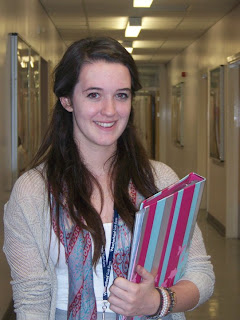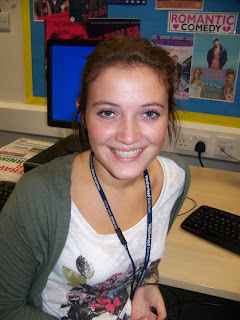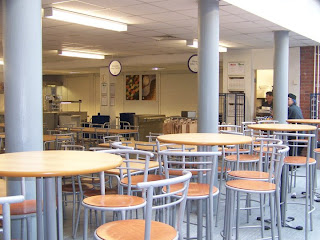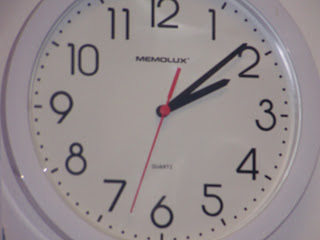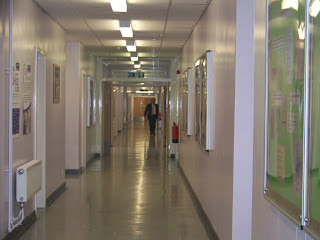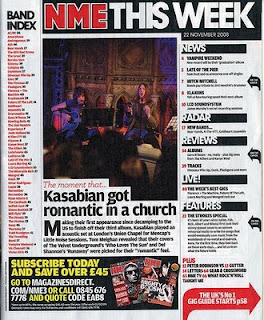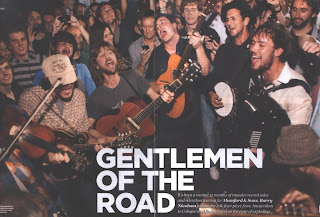Music Magazine Front Cover
The masthead is usually only one word long, the full width of the page and positioned on the top left side of the cover. The title always uses a unique font and is the largest text on the page.
The main image is usually a medium close up of a band or singer; the picture often uses direct mode of address (they are looking at the reader) and it conveys an attitude and the genre of the magazine.
The main cover line is the largest cover line on the page and will anchor the meaning of the main image. The other cover lines will give information about the magazine contents and are used to attract the target audience; these cover lines are often two or three words long.
There is only a few fonts used for the typography on the front cover and it is usually very consistent. The colour scheme of the music magazine only consists of a few colours.
Other features of a music magazine front cover include a positioning statement (found by the title), the issue number, date, barcode and price, puffs (usually offer something free to customers, for example, a CD) and occasionally smaller pictures are found on the cover that link to the coverlines.
In addition there is sometimes a strip at the top or bottom of the cover containing a list of bands/ artists/ topics that are featured in the magazine.
Music Magazine Contents Page
The contents page is usually split into columns with headings to divide up the contents; this often contains ‘Regular Content’ that is featured in every issue and ‘Features’ that are once only articles. There is often an editorial letter (accompanied by a photograph and signature), subscription details, the issue date and at the bottom of the page: the page number, website address and contact details.
Music magazine contents pages very often use a white background but use a consistent colour scheme (featured on the front cover); this page may also feature a repeat of the magazine title and include the word ‘Contents’.
Another convention of music magazine contents pages is the images used- there is one large image used and then a few smaller images, all of which link to the magazine articles; these images will also have the page numbers on them which will anchor them to the written content.
Music Magazine Double Page Spread
The double page spreads featured in music magazines are mostly set out in 3 or 4 columns and written in paragraphs with a quite informal tone- the article very often highlights the personality of the writer.
The headlines are creative and eye-catching and are usually in the same font as other text on the page; this headline very often bleeds across both pages. The standfirst is always found by the headline and before the start of the main text- it is used to introduce the article and works with the headline to inform readers what the article is about; it also usually uses a larger font than the rest of the article.
At the beginning of the text there is a drop capital featured so readers know where the article begins, they are usually in bold or in a bigger size text and drop down a few lines into the article.
The main image very often takes up a whole page or more and relates to the angle that the article is taking. Double page spreads may also feature smaller images or drop quotes to break up the text and make the article more appealing to readers. Occasionally quotes may also be found beside images and link the photo to the text.
Double page spreads will also include a byline which tells the reader who the article was written by; the photographer will also be credited.
At the bottom of the page the page number, magazine title, issue date and occasionally the website will be found.
